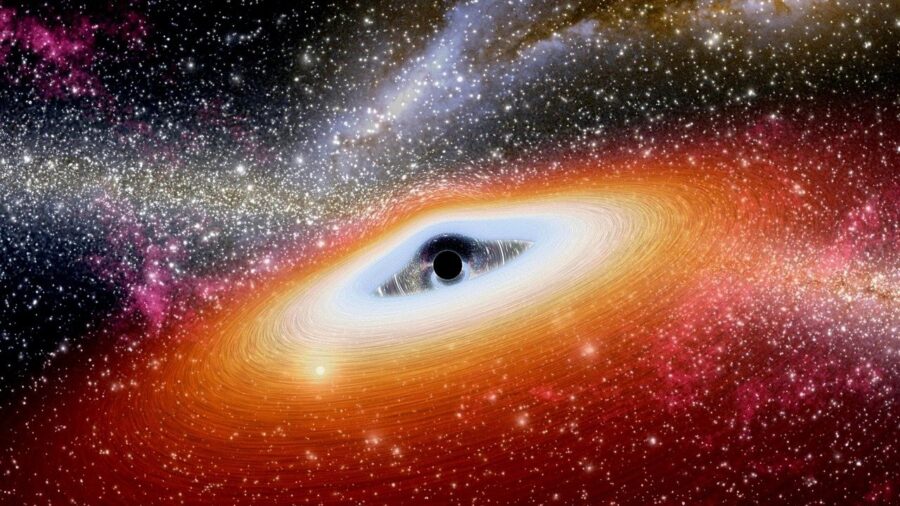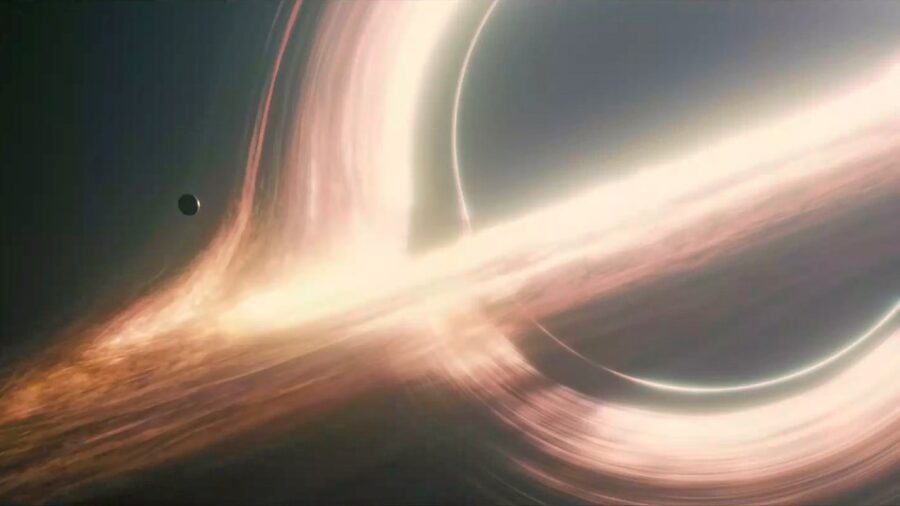NASA Discovers Supermassive Black Hole At The Edge Of The Universe

The James Webb Space Telescope has only been in service for under a year, but the impact that it has had on our understanding of the universe has already been tremendous. Gizmodo reports that the orbiting infrared observatory has spotted a supermassive black hole at the edge of the universe that dates back to roughly 570 million years after the big bang.
The black hole in question, located in the CEERS 1019 galaxy is relatively small compared to other supermassive black holes, but is believed to weigh in at an impressive nine million solar masses.
With the help of the Webb Space Telescope, NASA has discovered a supermassive black hole at the edge of the universe.
For context, most supermassive black holes boast masses that are billions of times the mass of our sun. So in the grand scheme of things, CEERS 1019’s black hole is just a blip on the cosmic screen when you consider how much smaller it is in comparison.
But this is still a significant discovery for researchers because we currently know very little about black holes that are this size, and this far away.
The survey team behind the discovery of this black hole also confirmed the existence of eleven galaxies that existed when the universe was only 470 to 675 million years old.
Black holes are known for having gravitational fields so intense that light can’t escape from their theoretical boundaries, so the image we’re seeing is not the actual black hole, but rather the “shadow” that is left in its wake.

But the image that was complied by NASA is absolutely stunning despite the fact that it’s absolutely beyond our comprehension. The 510 megabyte photo, when viewed in all of its glory, reveals light that has traveled over 13 billion years to reach the Webb telescope.
Simple math dictates that if the newly discovered black hole is 570 million years old, and the universe is 13 billion years old, then we’re looking at a black hole that materialized when the universe was just around four percent its current age.
The survey team behind the discovery of this black hole also confirmed the existence of eleven galaxies that existed when the universe was only 470 to 675 million years old. This type of discovery is a (super) massive accomplishment because it’s proof that the Webb Telescope is capable of detecting these masses better than we could have ever imagined.

What’s more, the Webb telescope is the first observatory to clearly capture evidence of not only distant galaxies, but lower mass black holes that popped up very early in the universe’s life.
As scientists continue to get a firmer grasp on the relation between black holes and distant galaxies, they can use their newfound knowledge to better understand black holes that exist in galaxies that are much closer to our own.
The Next Step
But now that we’ve been able to confirm the existence of smaller, more intermediate-sized black holes, we now need to figure out what this means in regard to the formation of truly supermassive black holes and their relations to neighboring masses that surround them.
As the Webb telescope continues to compile data and imagery for researchers to make sense of, more questions are being raised about how many lower-mass black holes there could possible be.
It’s startling to think that the Webb telescope has made so many breathtaking discoveries since it was put into service on July 12, 2022, and we can only imagine how many more stunning images we’ll see in the months and years to come as we continue to uncover the mysteries of the universe.












